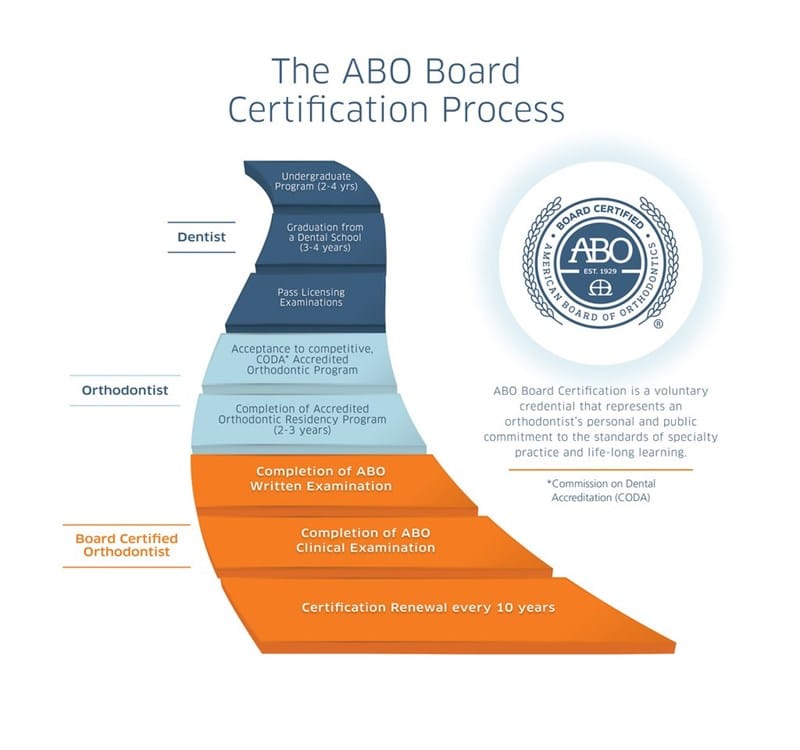About Board Certification
Are All Orthodontists Board Certified?
Dr. Catherine Worthington is a board-certified orthodontist and is recognized as a diplomate of the American Board of Orthodontics (ABO). However, not all orthodontists are board certified. While every orthodontist must be licensed to practice, only about half go on to earn board certification through the American Board of Orthodontics. This certification is a voluntary and prestigious achievement that goes beyond the required two to three years of advanced orthodontic training.
To become board certified, an orthodontist must submit detailed case studies that demonstrate their expertise in treating a wide range of orthodontic problems. The process also includes an in-depth interview and evaluation by a panel of expert examiners, focusing on clinical skills, treatment outcomes, and professional judgment.
How Many Orthodontic Certifying Boards Are Recognized by the ADA?
Just one. The American Board of Orthodontics (ABO) is the only certifying board for orthodontics recognized by the American Dental Association (ADA). Established in 1929, the ABO is also the oldest specialty board in dentistry. Its mission is to advance the quality of orthodontic care by encouraging excellence through certification, continued education, and professional collaboration.
Why Do Some Orthodontists Pursue Board Certification?
Orthodontists who complete the board certification process show an exceptional commitment to clinical excellence and patient care. By voluntarily pursuing certification, they demonstrate that they not only meet but exceed the standard requirements in the field.
Board certification reflects a dedication to staying current with the latest techniques, research, and technology in orthodontics. For many orthodontists, it’s also a personal and professional milestone—one that represents their passion for delivering the best possible results to their patients of all ages, including children, teens, and adults.
What Is Involved in the Board Certification Process?
The path to becoming board certified is both rigorous and rewarding. Here’s an overview of the key steps:
Written Examination – A comprehensive 240-question exam covering all critical aspects of orthodontic knowledge and practice.
Clinical Examination – Candidates present documented case studies demonstrating their ability to manage a variety of complex orthodontic cases. These cases are carefully evaluated by a panel of expert examiners.
Oral Examination – An in-person assessment where the orthodontist’s diagnostic and treatment planning skills are tested through the discussion of real cases and theoretical scenarios.
Once certification is earned, it is time-limited, requiring renewal every 10 years. To maintain their status, board-certified orthodontists must continue to demonstrate excellence in patient care and stay up-to-date with advancements in the field.
To learn more about board certification in orthodontics, click here.

